Japanese cuisine is expanding more and more into the western world. Not only are the individual dishes enjoying increasing popularity, but also the methods of cooking. This also includes the different types of grill. The small and large table grills such as the Japanese Konro grill are particularly fascinating.
How does the Konro grill work?
The Japanese Konro Grill https://www.theorientalshop.eu/product/konro-grill-with-mesh-54-x-23-x-20-cm is characterized by its rather slim shape. Due to the rather cuboid structure, it can be perfectly placed on a long table. The small square grills https://www.theorientalshop.eu/product/konro-grill-with-mesh-15-x-15-cm/ are more intended for only a few guests. The special shape and the material used ensure long barbecuing pleasure with constant heat output. All you must know about the Japanese Konro Grill, you will learn here!
Origin, material, and manufacture – unmistakable craftsmanship from Japan
A traditional Konro grill is made up of diatoms. Over millions of years it was possible to compress these under the pressure of the sea around Suzu into a compressed thermal insulation stone. The basis for algae growth was the mineral-rich water that was enriched by volcanic activities. The environment favoured the algae growth very much, so that there was an enormous but also momentous growth of the algae. The large number of algae exhausted the nutrient deposits and restricted the supply of light in the former lake. Because photosynthesis did not take place, a large number of algae died. The remains sank to the ocean floor, where they were either nutrient source for new generations of the diatom or part of the huge diatoms depleted that it is in today’s Japanese sea. This resulted in so-called diatomaceous earth. The earth is very porous during extraction, but at the same time has a low density. This allows the material to develop spongy properties and has excellent insulating properties. It is also heat resistant, even at extremely high temperatures. So, it has all the features that a light table grill https://www.theorientalshop.eu/product/konro-grill-with-mesh-28-x-11-cm/ should have!
Suzu is in the Japanese prefecture of Ishikawa on the Noto Peninsula, making it ideal for the breakdown of diatoms – and of course for the construction of the Japanese Konro grills. The fossil rock is particularly light and can therefore be easily transported. Plus, it fits so perfectly in the middle of a table! In Suzu the diatomite is primarily used to make grills, heat-resistant bricks, but also Filters. The Japanese city is virtually the capital of diatomaceous and its processing. The deposits are estimated at around 5.1 billion cubic meters.
The locations of the diatomaceous earth occurrence are determined not by scientific measurements and soil samples, but quite traditionally by oral traditions from the elders of this industry. What used to be a flourishing branch of industry is now only operated by larger companies. Therefore, the modern mining companies rely on the statements of only a few elders. Dismantling can be exceedingly difficult as the passageways are very small and narrow. The experienced miners must chisel or etch the stone very precisely with the help of a grid pattern. Once the block has made it out of the mine, it is fired directly in the pottery kiln without pressure. The lack of a pressing process makes the diatoms produced in Suzu unique.
The Japanese craftsmanship comes into its own in the manufacture of the grills. These are made by hand and are therefore constantly checked for their excellent quality. The high-quality workmanship guarantees lifelong enjoyment of the Konro grill. The assembled diatoms bricks are either held together by mortar or by stringing them together precisely using the highest level of construction. The diatoms can withstand temperatures of up to 1,000 ° C after they have been burned. Due to the high heat output, dripping meat juices cannot simply extinguish the embers. In order to have an excellent barbecue experience, we therefore recommend very special charcoal.
How to properly use the Japanese Konro grill
To have the most out of your Konro table grill, should you observe a few rules. Because otherwise the pleasure will not last long:
- Do not heat the charcoal directly in the grill
- Always place the appropriate grill rack on the Konro grill
- Let the table grill cool down completely before cleaning
- Do not use water to clean the Konro grill. Otherwise the porous material soaks up the water and if you pour in glowing coal, the grill will be destroyed
- Do not use any other liquids for cleaning
- Remove ash and dust with a brush
- Before using the Konro grill again, it must be completely dry
- Only use the grill in well-ventilated areas – otherwise there is a risk of carbon monoxide poisoning
Binchotan charcoal – an incredibly special charcoal
Anyone who has already gained some experience with grilling meat, fish and vegetables knows that charcoal is not just charcoal. Since we already know the passion for cooking and the associated wealth of ideas from Japanese cuisine, it is only logical that only an incredibly special charcoal is used here: the Kinshu Binchotan charcoal https://www.theorientalshop.eu/product/binchotan-charcoal-from-japan-12kg/.
Origin
According to tradition, the manufacture of the Binchotan, or Binchōzumi, goes back to the end of the 17th century. In the Japanese prefecture of Wakayama, more precisely in the city of Tanabe, the craftsman Bichū-ya Chōzaemon is said to have made the ‘white charcoal’ for the first time. The first charcoal is said to have been made from the Ubame oak, which is still used today. Since Binchotan is not only produced in Japan, but also in Indonesia and Vietnam, the Japanese original has been given the name Kishū binchō-tan. This ensures that the charcoal actually comes from Wakayama Prefecture – Kishū is the old name for Wakayama. The Asian holm oak is a hardwood with a good bulk density as soon as the dry moisture has developed, i.e. if the wood is dry, there is a high density and thus a good calorific value. Ideal prerequisites for a coal that should keep constant heat for four or five hours! Unfortunately, high density tree species, like the Japanese oak, take a little longer to grow because they tend to do so very slowly.
That is why the oaks are not felled completely, only the appropriate branches are harvested. The charcoal is also particularly time-consuming here. This is why Japanese white charcoal is more expensive than comparable charcoal from Indonesia or Vietnam. In addition, it is more difficult to cultivate and the profession of Binchotan charcoal burner is less and less practiced due to its decreasing attractiveness.
Manufacture and characteristics
Since the hardwood of oak is already particularly hard, the end product, the Binchotan, is also refined into one of the hardest charcoals. Is carbonized at about 1000 ° C, so that the coal later even at low temperatures well burn with a steady glow. Due to the different temperature phases of the simmer it is possible to burnt out all combustible and non-combustible gases – which cause bad and poisonous taste. At the same time, the density of the coal increases. As a result, however, it burns longer and evenly – as well as being perfect for grilling on the Konro grill!
Probably the most remarkable thing about this charcoal is the almost odourless burning. This means that dishes such as eel or chicken can be cooked on the grill, whose exceptionally fine aroma is not over-smoked. Should fat drip from the meat onto the charcoal, it will not burn immediately. A small, slightly smoky cloud arises with the aromas of the fat, which finely perfume the grilled food when it rises. The odourless grilling also has the advantage that the guests are not also smoked when grilling together. Thanks to all these extraordinary properties, it is not surprising that the Binchotan is very popular in Japan. Grilling is known as one of the healthiest ways of cooking – if nothing burns! It is therefore particularly popular in Japanese cuisine. Binchotan is particularly suitable for the different types of grills:
- Yakitori – traditional chicken skewers
- Unagi – traditional preparation with several grills of the eel
- Robatayaki -. Grilling on a common so-called Irori the sunken n cooker ‘
- Yakiniku – special way of grilling meat
- Konro grill
The burn time of 4 – 5 hours is ideal for exuberant barbecuing fun! Also arises with the grilling Binchotan far infrared rays – these provide a special transport of heat. Infrared heat is particularly suitable for maintaining a constant temperature – this is why it is also used to treat people with muscle tension. In addition, the long grilling process is ideal for groups – not only because of the extraordinary experience of culinary arts – a real haute cuisine experience with an haute cuisine product!
The Kishū binchō-tan is a very exquisite product, which is why we recommend beginners to first familiarize themselves with Binchotan https://www.theorientalshop.eu/product/binchotan-charcoal-from-indonesia-10-kg/ from Indonesian eucalyptus and teak wood. The two types of charcoal have a shorter burning time of 2 – 4 hours but are also cheaper. They are therefore better suited to trying out a bit in first. These Indonesian charcoals https://www.theorientalshop.eu/product/binchotan-charcoal-from-indonesia-15-kg/ can also score points with the properties of the original white charcoal:
- Low moisture level
- Long burning time
- Constant heat generation
- Little to no smoke development
- Little to no flying sparks
- Odourless burning
There are two different versions: hardwood or briquettes, pressed from sawdust. The briquettes have, in comparison to the other varieties, a rather short burn time of 2 to 3 hours. In addition, they do not glow as hot as the hardwood logs. However, depending on the food that is to be grilled on the Konro grill, they are a good alternative.
The perfect barbecue result – unity of Japanese Konro grill and Binchotan
To get the perfect result, Konro Grill and Binchotan have to come together. This begins already with the lighting of the white charcoal.
- The most environmentally friendly way to do this is with a cast iron pan, https://www.theorientalshop.eu/product/iron-handly-charcoal-starter-14-5cm/ that is well ventilated below. This can simply be heated on a small hotplate with an open flame – of course, only with constant observation! How you can tell that the Japanese Binchotan coal is at the right temperature – it glows deep red and has a white coat! But that also requires a little patience. The coal should glow evenly. If it is not really hot, the grilling result will deteriorate, and the taste of the grilled ingredients will suffer. In addition, more of the precious coal is then needed.
If you use a so-called charcoal chimney, make sure it has a spark protection feature – otherwise you may get burned.
Note: Since not all gases can escape 100% during the coals process, they are firmly enclosed in the charcoal. When it is ignited, this can escape suddenly – then the coal can jump out of the ignition container. Therefore, keep a reasonable distance and do not lean over the charcoal while lighting and waiting.
Tip: Do not use synthetic grill lighters. Otherwise toxic fumes and ashes will develop, which will then end up on the grilled food.
- Now the coal can be put in the Konro grill. Metal tongs are best suited for this https://www.theorientalshop.eu/product/metal-iron-pliers-45cm/. Because the coal should be stacked with two to three layers. In this way an optimal heat distribution and thus an excellent barbecue result can be achieved. The coal should in no case simply throw in the grill – this can result in serious accidents and spark jump.
- The grill should only be filled as far as it is grilled, i.e. if only half of the grill is used, only half of the cabbage should be used. This is both economical and environmentally friendly.
- When you have really eaten your fill, is there only ash left in the end? Well, with high-quality Kishū Binchotan there should be almost no ash left! However, if you still have glowing coals, there are again two options. The easiest way to ‘smother’ the embers in a charcoal fire extinguisher made of cast iron. https://www.theorientalshop.eu/product/cast-iron-charcoal-fire-extinguisher-26-5-x-20-5-cm/ If you extinguish the coal in this way, pieces that have not yet been burned can be reused. You can also use pliers for this. If you want to completely dispose of the coals with ash, you can do this simply with a small https://www.theorientalshop.eu/product/kitchen-iron-mini-shovel-for-grill-konro-44cm
- When the grill has cooled down, it can be cleaned with a brush. In any case, water must be avoided, otherwise the grill will be permanently damaged. Therefore, the grill must also be protected from rain and must not be stored outside. The grid can also be cleaned with a brush. Also, the heat-resistant wooden base https://www.theorientalshop.eu/product/wooden-grill-without-mesh-59-x-28-x-2-5-cm/, on which the barbecue stands, should then be cleaned, too.
Caution: Cleaning should only be carried out when the grill and accessories have cooled down. Otherwise you run the risk of getting burned!
The grilled food
Pretty much anything your heart desires can be put on the Japanese Konro Grill. From meat to fish to vegetables or even fruit, pretty much anything can be put on the grill. This is traditionally done in Japanese with the chicken skewers like the yakitori or in western style with a sausage. Let your creativity run free! The delicacies taste best in small but many servings. Then you can eat a bit of everything. With the larger gills, however, you can safely put a large steak on the grill.
What we love to grill
We at the Oriental Shop love to grill – especially after work. After all, what better way to end work than with a delicious Japanese beer https://www.theorientalshop.eu/product-categorie/japanese-food/asian-beers-japanese-food/ in one hand and a juicy yakitori skewer in the other? But also, green asparagus, wrapped in bacon, makes our mouths water.
The chicken skewers can be prepared quickly and easily and are also quickly cooked on the grill:
Ingredients for 4 servings:
- 750g chicken breast fillet in pieces
- 2 leek sticks (only the white parts)
- Wooden skewers with flat handles
- 7 cloves of garlic
- 35g ginger (fresh)
- 7 tbsp brown sugar
- 7 tbsp mirin
- 7 tbsp sake https://www.theorientalshop.eu/product/classic-brown-720ml/,
- 7 EL Soy sauce https://www.theorientalshop.eu/product/sojasaus-kikkoman-250ml/
- 3 tbsp sesame oil
Preparation
- The sauce
For the tare sauce, peel the garlic, press down a little and then dice very finely. Peel the ginger with a teaspoon and dice very finely, too. Puree the liquid ingredients together with the sugar, ginger, and garlic until smooth. Bring the mixture to the boil at medium temperature and then immediately remove it from the stove and set it aside. As soon as the sauce has cooled down, it is best to put it in a nice sauce pot https://www.theorientalshop.eu/product/dark-blue-soy-sauce/ because the meat is not marinated before grilling, but rather drizzled with the sauce after grilling or dipped in directly.
Caution: If there is no hand blender, the ingredients can still be cooked as above. The ginger should then also be lightly pressed. As soon as the sauce has cooled down, it can be passed through a fine sieve or a pass cloth.
Tip: The sauce tastes best when it can steep again overnight.
- The skewers
The fillet should be cut into bite-sized pieces that are not too heavy for the skewers. In addition, they should be evenly thick, otherwise one part will not be cooked in time, while the other – could now be slightly charred.
The wooden skewers should be soaked in water for at least 20 to 30 minutes, otherwise they will start to burn on the grill.
The leek is cut into 1.5 to 2 cm wide slices. Make sure the rings stay intact and do not fall apart.
You can now alternate meat and vegetables on the skewer as you wish.
- The hot phase
Now it is on to the grill! Simply put the skewers on the grill and wait until it starts to smell wonderful! And then garnish with the delicious Tare sauce – and put straight into your mouth.
Tip: If you want to experience the pure grill and meat taste, you can simply sprinkle a few flakes of coarse sea salt on the skewer instead of the tare sauce.
We are absolutely of excited these small and large craft works – because of Konro Grill convincing t not only with function and form. He is also a guarantee of social summer evenings with friends. You can also spend romantic evenings for two on a mild summer night with a delicious dinner. What are you waiting for?

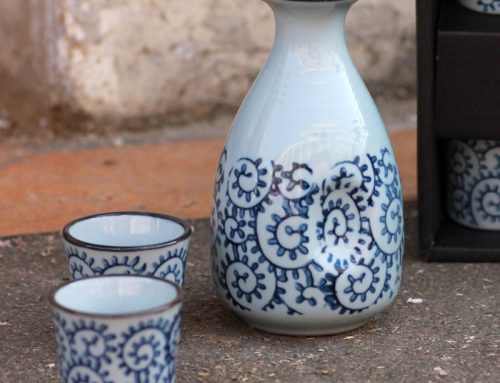
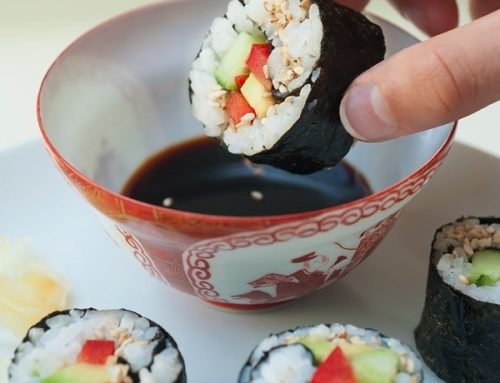
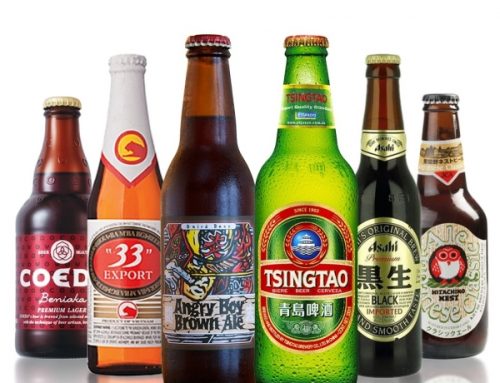
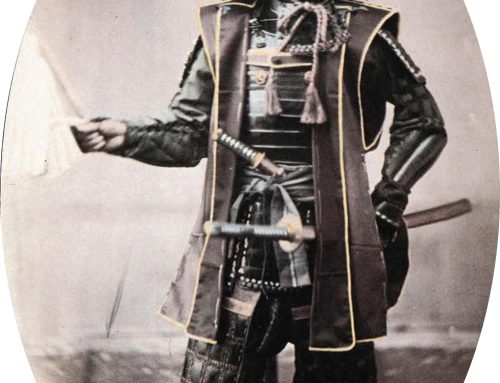
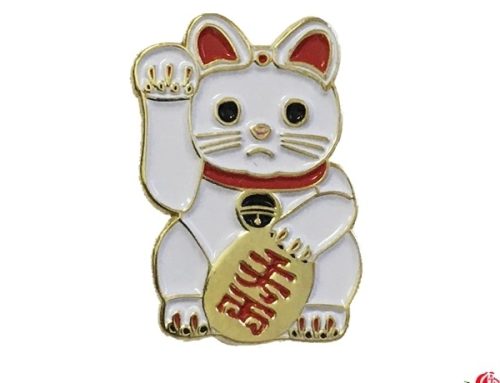
Leave A Comment